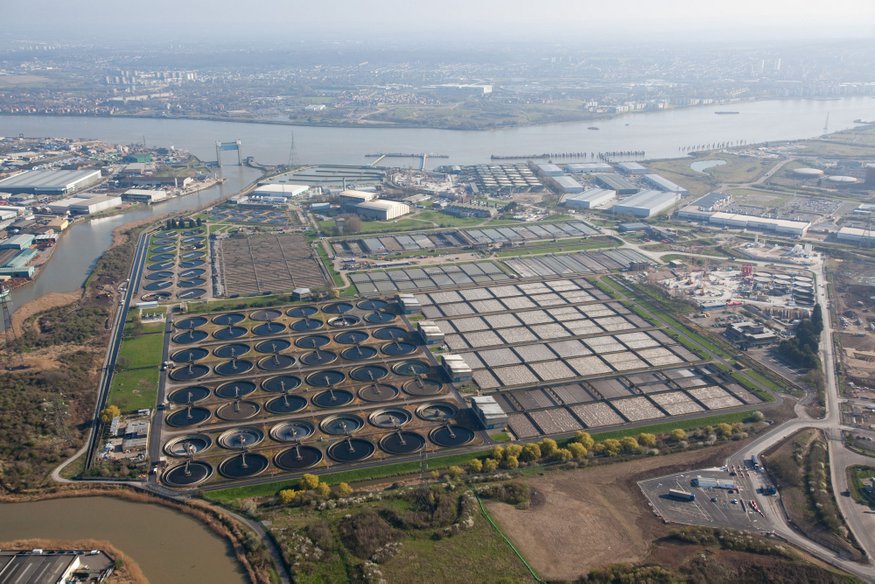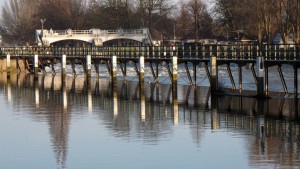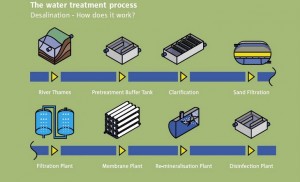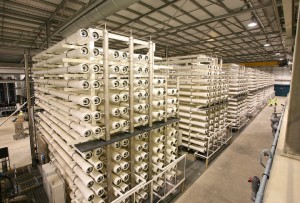
The Place That Will Save Us When There’s A Drought: London’s Desalination Plant
Desalination: making drinking water out of the sea. It’s for hot, dry places like Barcelona, Sydney and London. That’s right, London has a desalination plant. It is called the Thames Gateway Water Treatment Works and it opened for business in 2012. Sort of.
The desalination plant in Beckton is only allowed to operate during drought. We haven’t had a drought since 2012, so the shiny new desalination plant has never been used in anger. Thames Water switches it on for three months every year just to check everything is in order, but otherwise it’s mothballed. This is quite normal for desalination plants. The plant in Sydney has also been sitting idle since their last big drought. Desalination plants are very expensive to run because it is not easy to take salt out of water. It’s the water of last resort.
Why do we need it?
If it is always raining in London, so why do we need a desalination plant? Do we have the wrong kind of rain? Well, yes. London is damp and dreary a lot of the year, but we get less annual rainfall on average than Sydney and Barcelona.
20% of London’s water supply is from ground water. The remaining 80% comes from the Rivers Thames and Lee. The water in our rivers also mostly comes from under the ground. London’s water supply depends on topping up ground water every winter. If we have more than one dry winter, river flows start to drop and we risk running out of water.
The ‘desal’ plant is a backup supply for drought. It provides resilience to London’s water supply system for when we have a few dry winters in a row. When operating at full steam it can supply 400,000 homes (900,000 people).
Where is it?
The plant is on the site of the Beckton Sewage Treatment Works, on the shore of the Thames Estuary. It only takes water from the estuary as the tide is going out, when it is less salty. The desal intake is upstream of the discharge from the sewage treatment works, so wastewater isn’t recycled. Using ‘brackish’ water rather than sea water reduces the amount of energy used in treatment — less salt in the water to start with, less energy needed to get it out again.
The desal plant at Beckton is the first water treatment plant downstream of Teddington Weir since 1855. Teddington marks the point where the fresh water Thames finishes and the tidal Thames starts. Back in the time of cholera, London officials realised that water from the tidal Thames was making people sick, and banned water companies from using it in supply.
How does it work?
The water in the Thames Estuary is dirty. This is mostly due to river sediment being washed up as the tide comes in and out. The first stage of treatment is to get rid of all the ‘suspended solids’ (mud) in the water using a series of settling tanks and filters.
The main business of desalination is ‘reverse osmosis’. Reverse osmosis works by forcing water through a membrane, leaving the salt behind. You end up with a very salty solution on one side of the membrane, and very clean water on the other side. It is so clean that Thames Water need to add minerals back in to the treated water to stop it corroding their pipes and to make it taste OK.
Forcing water through a membrane that is fine enough to filter out dissolved salt requires a lot of pressure. The pressure is created by several very big pumps. The pumps run on electricity — a LOT of electricity.
So isn’t it a big waste of energy?
Desalinated water has been called ‘bottled electricity’. When operating at full capacity the Thames Gateway plant uses enough electricity to power around 42,000 homes. That is at least five times more energy than normal water treatment.
It is standard practice for desalination plants around the world to counter concerns about energy consumption by using renewable energy. The Thames plant is nominally operated using renewable energy produced from the sewage treatment works. Sewage treatment produces methane, which is burned to make electricity. This renewable energy can then be used for desalination.
Londonist thinks the ‘renewable desalination plant’ idea is a bit of a con, not just in London. We need renewable energy to reduce carbon emissions. Using renewable energy to justify an increase in energy consumption for desalination is like running a marathon so your can eat cheesecake for breakfast. It works, but it would be easier to have cornflakes.
Will we get more desalination plants?
Unlikely. London is forecast to have serious water shortages in coming decades, mostly due to population growth. Thames Water’s main option for increasing supply is water recycling, which is cheaper than desalination. This would take treated water from a sewage treatment works, put it through reverse osmosis membranes, discharge it back into the fresh part of the river or ground water, then use it in our normal water treatment system. This would use less energy than desalination because water coming out of the sewage treatment works is cleaner than water in the estuary.
What’s Boris got to do with it?
We’ve got Boris Bikes, Boris buses and dreams of Boris island. Desalination is Boris water. When Thames Water originally proposed the desal plant they were denied planning permission by the then Mayor of London, Ken Livingstone. Things were caught up in the courts when Boris was elected. One of his very first actions as Mayor was to grant approval to the plans. Now we have a desalination plant. Thanks Boris.
See details of our Guaranteed Rent Scheme here





If you have any comments, please email the author of this article and click on the link above